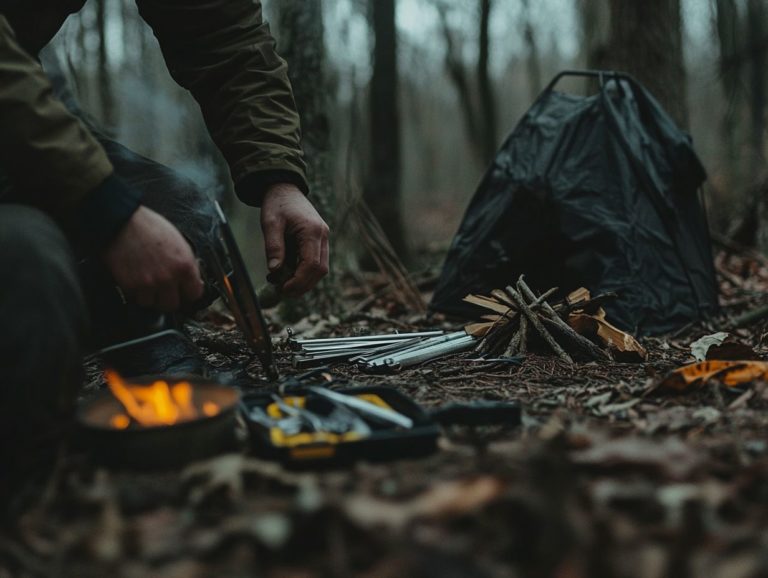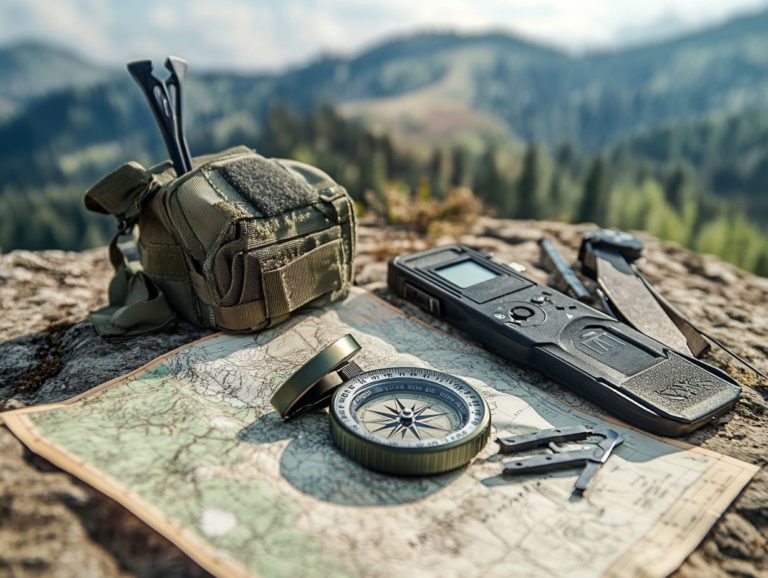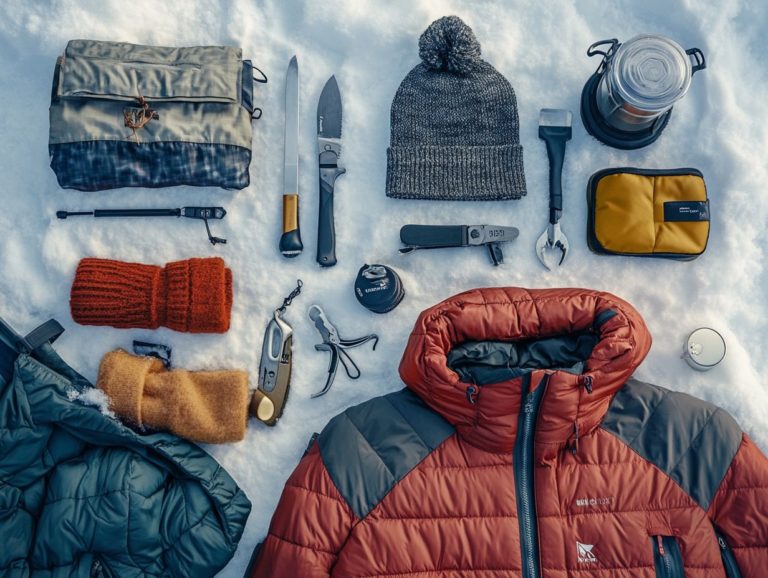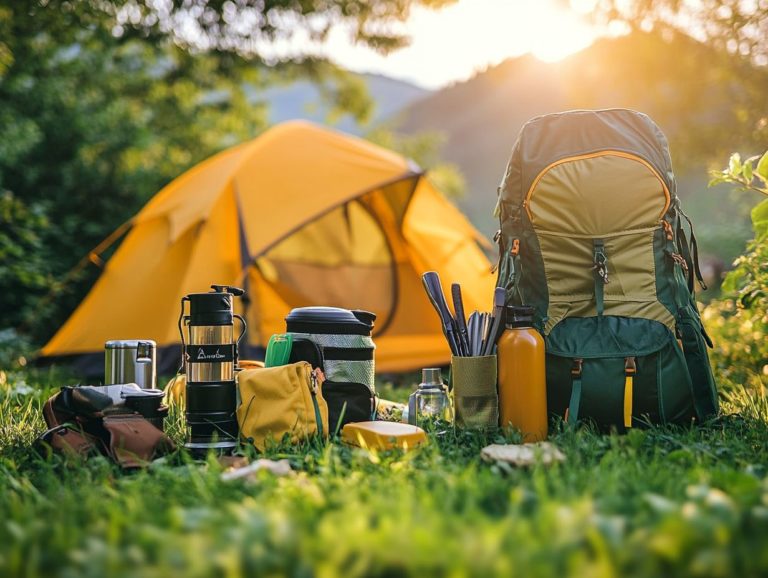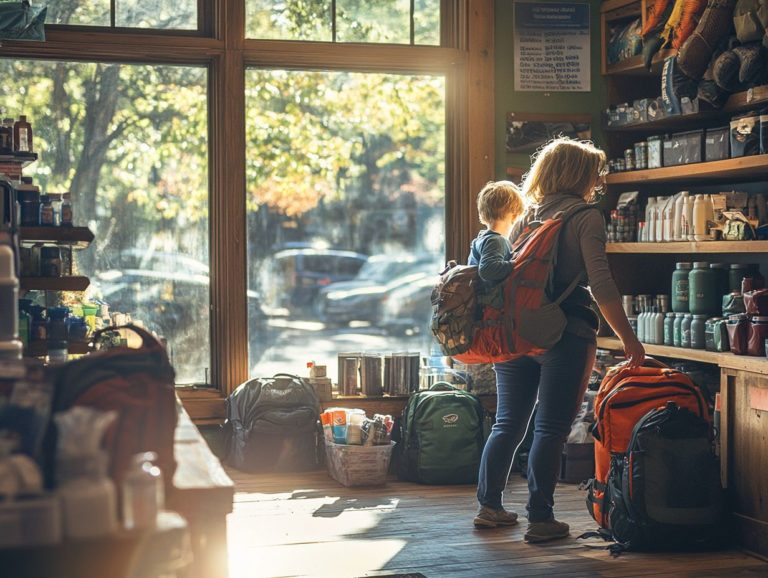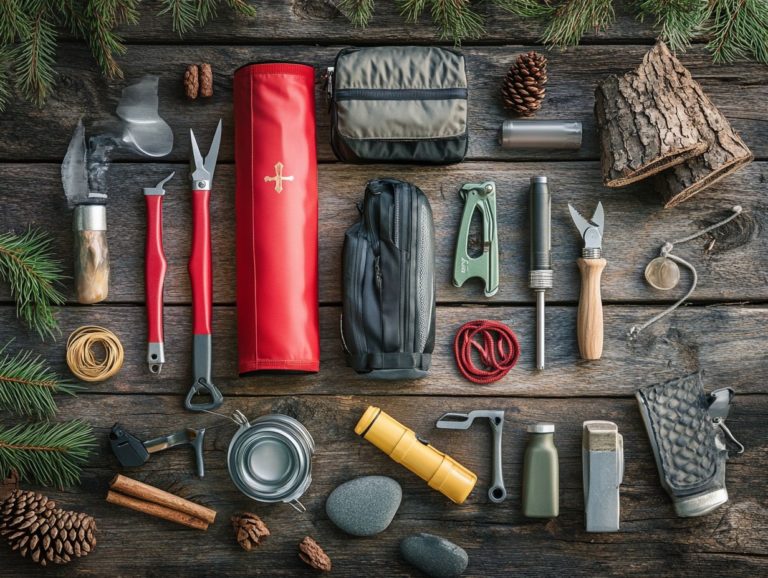How to Make Your Own Survival Gear
In a world where being prepared is essential, creating your own survival gear can be both empowering and practical. This hands-on approach allows for a personal touch and tailored functionality.
This guide walks you through the essential tools and materials you’ll need. It covers everything from basic shelter and fire-making tools to advanced navigation devices.
Enhance your survival skills with handmade solutions. These skills are crucial for resourcefulness in emergencies!
Contents
- Key Takeaways:
- Why Make Your Own Gear?
- Essential Tools and Materials
- Basic Survival Gear to Make
- Advanced Survival Gear to Make
- Tips for Creating Durable and Effective Gear
- Frequently Asked Questions
- 1. What are some essential items to include when making your own survival gear?
- 2. How can I make a fire starter for my survival gear?
- 3. What materials can I use to make a shelter for my survival gear?
- 4. How can I make my own water filtration system for my survival gear?
- 5. Do I need to have sewing skills to make my own survival gear?
- 6. Are there any resources I can use to learn more about making my own survival gear?
Key Takeaways:
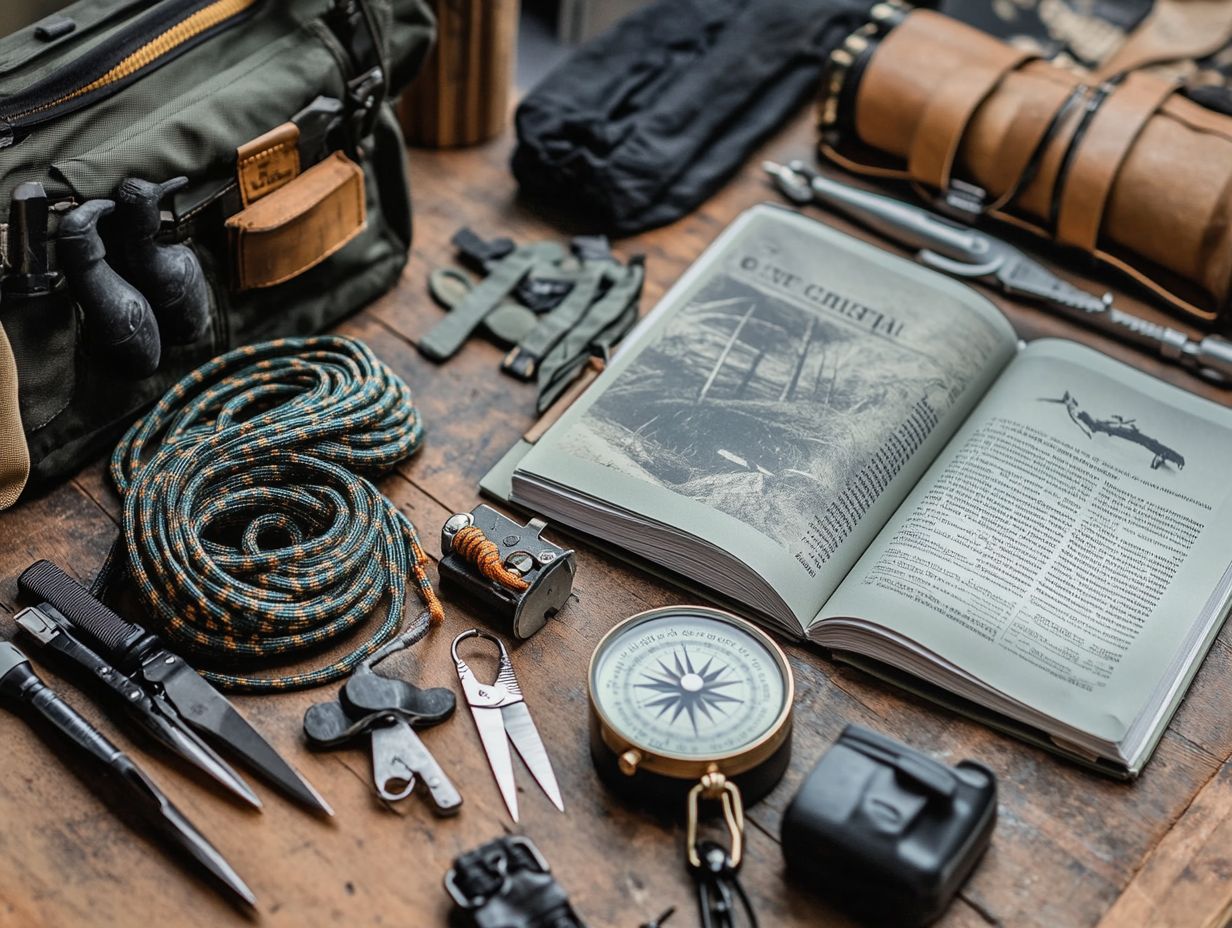
Why Make Your Own Gear?
Creating your own survival gear has become a vital pursuit for enthusiasts and outdoor adventurers alike. It not only builds self-reliance but also enhances your resourcefulness in emergency situations. By focusing on basic skills, you build a foundation for your outdoor activities.
Diving into Do It Yourself (DIY) survival tools allows you to tailor your survival kit to your specific needs. This ensures you re ready for unexpected challenges while honing invaluable crafting skills and mastering fire-starting techniques.
Crafting your own gear fosters independence by allowing you to explore various natural materials and techniques like knot tying and woodworking that resonate with your unique outdoor pursuits.
Essential Tools and Materials
To successfully craft a functional survival kit, gather essential tools and materials like a Swiss Army Knife, crafting tools, and a flashlight. These should be both effective and versatile for a range of outdoor activities.
Consider including fundamental cutting tools, such as a Swiss Army Knife or a tactical pen. Complement them with protective gear that ensures your safety in the wilderness, like a first aid kit and durable camping supplies.
Tapping into natural materials elevates your resourcefulness, enabling innovative DIY solutions in various emergency scenarios from crafting a fishing kit to utilizing fire-starting methods.
What You’ll Need to Get Started
To embark on your journey of creating a robust survival kit, gather an array of DIY survival tools and crafting materials that empower you to construct effective gear from scratch. Essential items include wood for building structures think grass huts and tools like a cord drill for modifications.
Including a sturdy knife in your kit proves invaluable for cutting materials and preparing food. A multi-tool offers versatility for tasks, from repairing equipment to crafting shelters.
Fire-starting tools, like magnesium sticks, are vital for warmth and cooking, ensuring you can create a safe environment. Ropes and paracord become lifesavers, allowing you to secure items or create makeshift solutions in crisis scenarios.
Finally, don t overlook a well-stocked first-aid kit, packed with essential medical supplies. This rounds out your toolkit, preparing you for any unexpected injuries during your wilderness adventures.
Basic Survival Gear to Make
Creating basic survival gear is essential for anyone looking to elevate their outdoor skills and ensure they’re prepared for various scenarios. You ll want to focus on crafting vital items like tools to start a fire; consider using natural materials such as magnesium fire starters.
Mastering fundamental skills like knot tying helps you build secure shelters and equip your gear effectively. Don t overlook woodworking techniques either they can be invaluable for building tools essential in emergencies.
Shelter and Fire-Making Tools
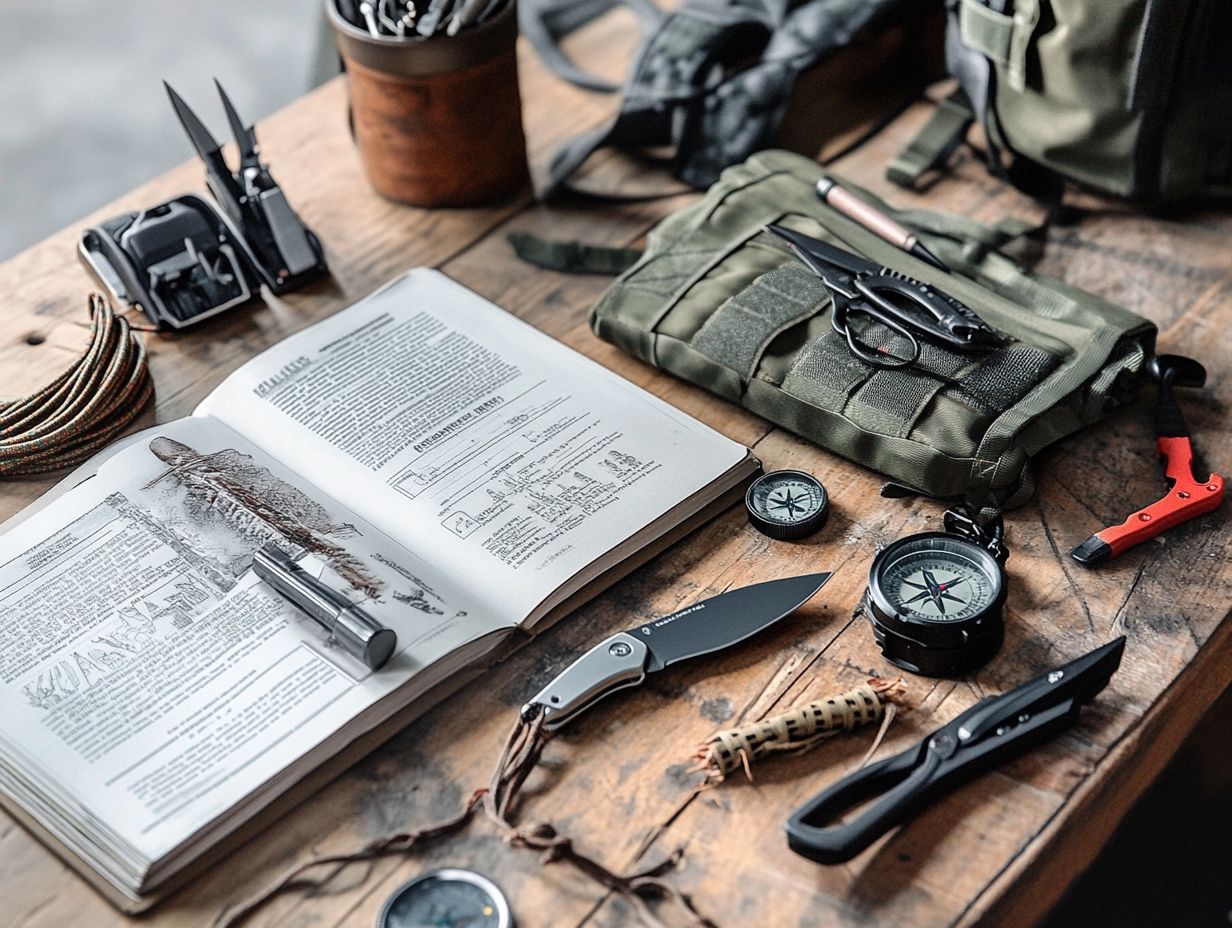
Building a shelter and effective fire-making tools is crucial for outdoor adventures. A well-constructed grass hut protects against the elements.
Innovative fire-starting methods will keep you warm and safe in emergencies. Including key items in your survival kit, such as aluminum foil, a magnesium fire starter, and a flashlight for visibility, will enhance your ability to create fire quickly and efficiently.
Understanding various shelter-building techniques can significantly boost your chances of staying safe and comfortable in the wild. For instance, methods like the lean-to or debris hut utilize readily available materials and can be easily constructed with minimal tools.
Similarly, mastering fire-making techniques whether through friction methods or using a ferro rod, a tool that creates sparks for starting a fire gives you the power to ignite a flame even in damp conditions. By exploring these practical skills, you can build a well-rounded survival toolkit that prepares you for unforeseen challenges in nature.
Water Purification Methods
Water purification is an essential skill for you to master as an outdoor enthusiast, ensuring your safety during wilderness excursions. A simple plastic bottle can serve as an effective tool for purifying water, enabling you to access clean drinking water from natural sources. Incorporating this technique into your survival kit preparation enhances your self-sufficiency and resourcefulness in the great outdoors.
Consider several other methods to secure safe drinking water:
- Boiling is a time-tested technique that not only eliminates harmful pathogens but also requires minimal equipment, making it accessible for anyone.
- Filtration systems, ranging from DIY setups to portable devices, provide varying degrees of effectiveness for water purification, allowing you to choose based on your specific needs.
- Chemical treatments with iodine or chlorine tablets can offer a quick and reliable solution.
Learn the pros and cons of each purification method to make smart choices during your adventures.
Advanced Survival Gear to Make
As you advance your outdoor skills, the creation of advanced survival gear becomes crucial for effective navigation and signaling in the wilderness. Crafting items such as a survival spear or a bow and arrow not only enhances your resourcefulness but also provides you with essential tools for food gathering and self-defense.
Moreover, integrating navigation devices into your survival kit, such as GPS units and topographic maps, can significantly impact emergencies, where every second truly counts.
Having reliable navigation and signaling devices, including a compass and reflective mirrors, in your survival kit is essential for thriving in the great outdoors and preparing for unexpected wilderness scenarios.
Understanding the importance of tools like topographic maps, GPS units, and basic reflective mirrors can give you critical insights into direction and location. In unfamiliar terrains, a compass helps you stay oriented despite any obstacles in your path, while a simple whistle can be a game-changer when it comes to signaling for help. Crafting smoke signals or using brightly colored materials can effectively catch the attention of rescuers.
Each of these devices holds its own significance, enhancing your chances of a safe return and cultivating a sense of preparedness and confidence when faced with adversity, especially in emergency situations.
Don’t wait! Equip yourself now with these essential tools for survival. Start crafting your basic and advanced survival gear today!
Food Gathering and Preparation Tools
Food gathering and preparation tools are essential elements of your survival kit. They ensure that you can sustain yourself in the wilderness. Crafting a fishing kit or a basic cutting tool enhances your outdoor survival skills and opens up new avenues for gathering food.
By mastering various techniques related to foraging and food preparation, you establish a solid foundation for effective survival practices in emergencies.
Get excited about learning the right skills and gear that will empower you to survive in the wild! Equipping yourself with the right knowledge allows you to assemble a comprehensive toolkit ranging from snares for trapping small game to methods for identifying edible plants.
A simple fishing rig can be constructed using a sturdy branch, durable lines, and appropriately sized hooks fashioned from available materials.
Sharpened stones or improvised blades made from bone can serve as excellent cutting tools. They are perfect for preparing your catch or foraged food. Embracing diverse foraging methods, such as recognizing mushroom species or berry bushes, enriches your experience and broadens your food options in the wild.
Tips for Creating Durable and Effective Gear
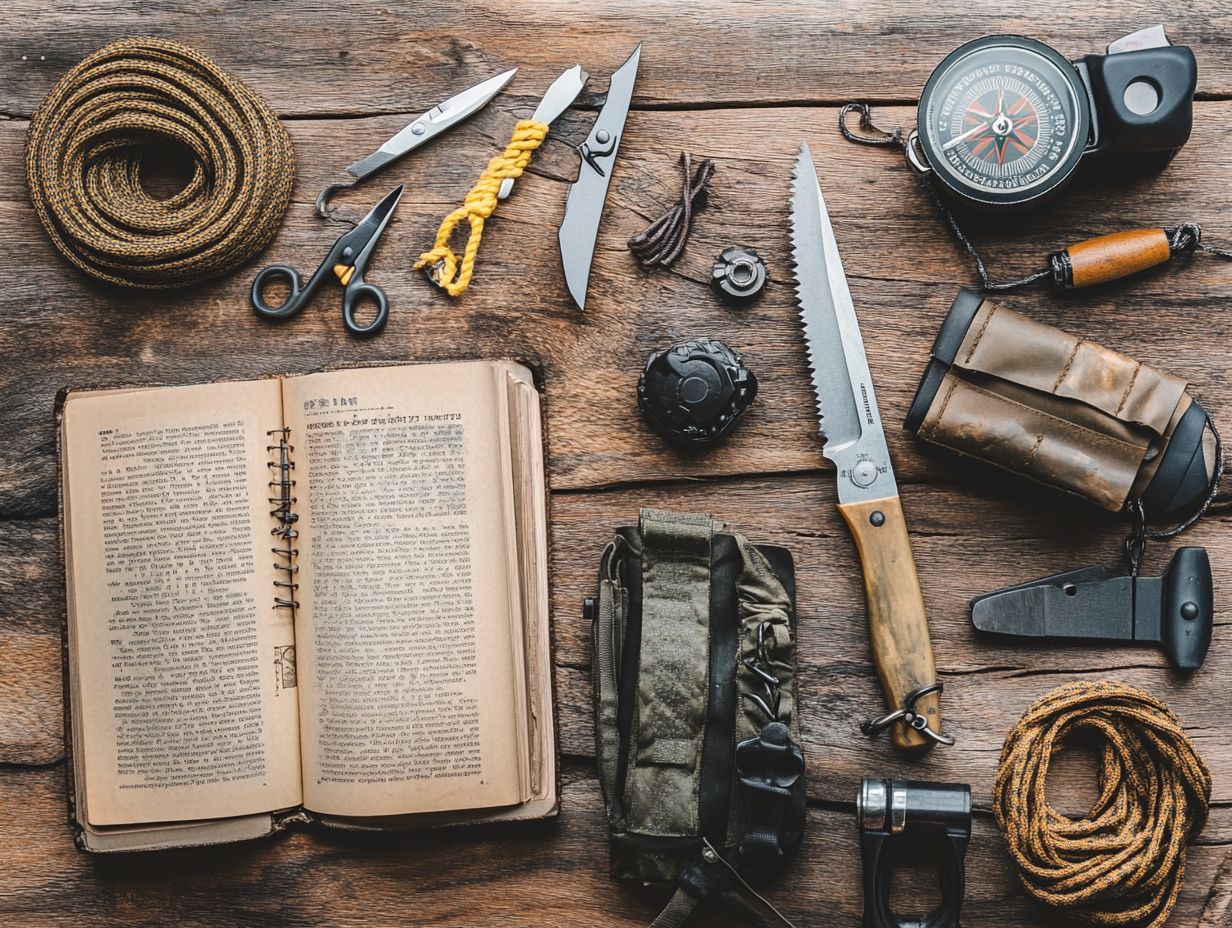
When crafting survival gear, prioritizing durability and effectiveness is essential. This ensures you choose the right materials for your projects, helping you thrive in outdoor adventures and emergency scenarios.
Testing your gear in real situations allows you to evaluate performance and see how well they withstand diverse conditions. This ensures your gear performs when it matters most.
Selecting the right materials and employing effective techniques help you create gear that surpasses your expectations, especially during challenging outdoor activities.
Choosing the Right Materials for Your Survival Kit
Selecting the right materials is crucial when crafting durable gear for effective survival situations. By utilizing natural materials, you enhance your gear’s performance and align with sustainable practices that foster self-sufficiency.
Integrating protective gear ensures you are well-prepared for the wilderness’s challenges, making your survival kit both comprehensive and reliable.
A variety of materials can be at your disposal, each offering unique advantages. For instance, paracord is renowned for its strength when pulled, making it perfect for constructing shelters or securing equipment.
Fabrics like ripstop nylon offer a lightweight yet robust option, ideal for creating weather-resistant bags or tarps. Wooden components from sturdy species make excellent choices for tools and fire starters, blending seamlessly into the environment.
Incorporating metals like titanium provides exceptional durability for your cooking gear or cutting instruments, ensuring reliability when it matters most.
Testing and Improving Your Gear
Field testing your gear is an essential step in ensuring its performance and effectiveness in real-life survival scenarios. Practical trials help identify both the strengths and weaknesses of your DIY survival tools.
Emphasizing the importance of iterative testing allows you to refine your gear to meet the wilderness’s demands. To evaluate performance effectively, simulate a range of survival conditions.
For example, assess how well a portable water filter operates with different water sources, or test the durability of a tarp in windy or wet environments. Documenting your observations helps pinpoint areas for enhancement.
Collaborating with fellow enthusiasts provides diverse insights and techniques, allowing you to adopt new testing methods. This shared knowledge ensures that your gear is functional and optimized for unforeseen challenges.
Frequently Asked Questions
1. What are some essential items to include when making your own survival gear?
When making your own survival gear, you should include a fire starter, water filter, shelter materials, first aid kit, and multi-purpose tools.
2. How can I make a fire starter for my survival gear?
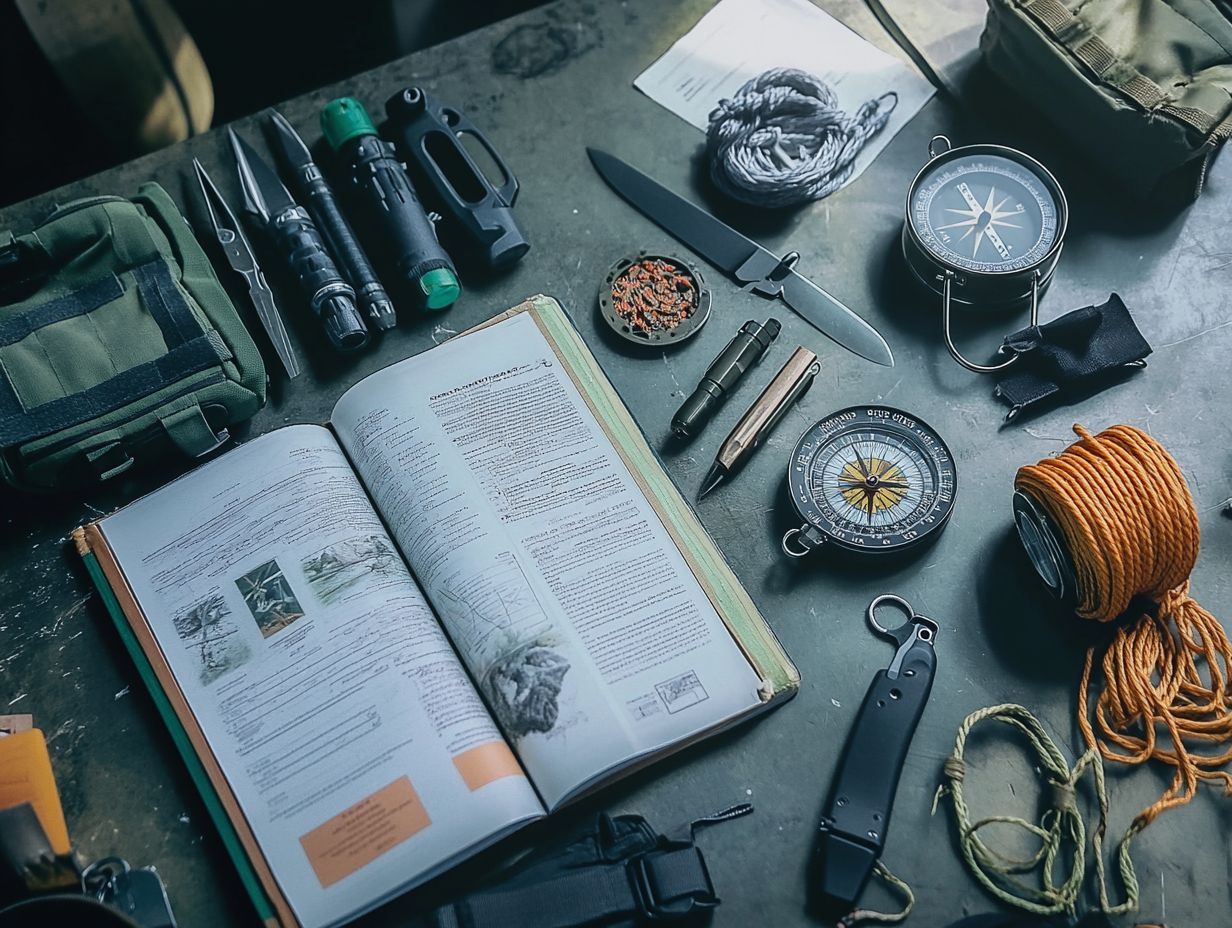
A simple fire starter is made by mixing cotton balls with petroleum jelly. Place them in a waterproof container and use a spark tool to ignite them.
You can also use dryer lint and wax as alternatives.
3. What materials can I use to make a shelter for my survival gear?
Consider using tarps, emergency blankets, paracord, or natural materials like branches and leaves. Choose lightweight options that can handle various weather conditions.
4. How can I make my own water filtration system for my survival gear?
Create a water filter using a plastic bottle, activated charcoal, sand, and gravel. Layer the materials in the bottle, pour in dirty water, and collect the clean water at the bottom.
5. Do I need to have sewing skills to make my own survival gear?
Many survival gear items don t require sewing skills. For example, you can make a sling with a bandana and a stick.
Also, you can create a paracord bracelet that includes a whistle for emergencies.
6. Are there any resources I can use to learn more about making my own survival gear?
Yes! Countless online tutorials and books can guide you in making survival gear. Join survival groups or attend workshops to learn from experienced individuals.
And remember, practice and test your gear to ensure it’s ready when you need it!

